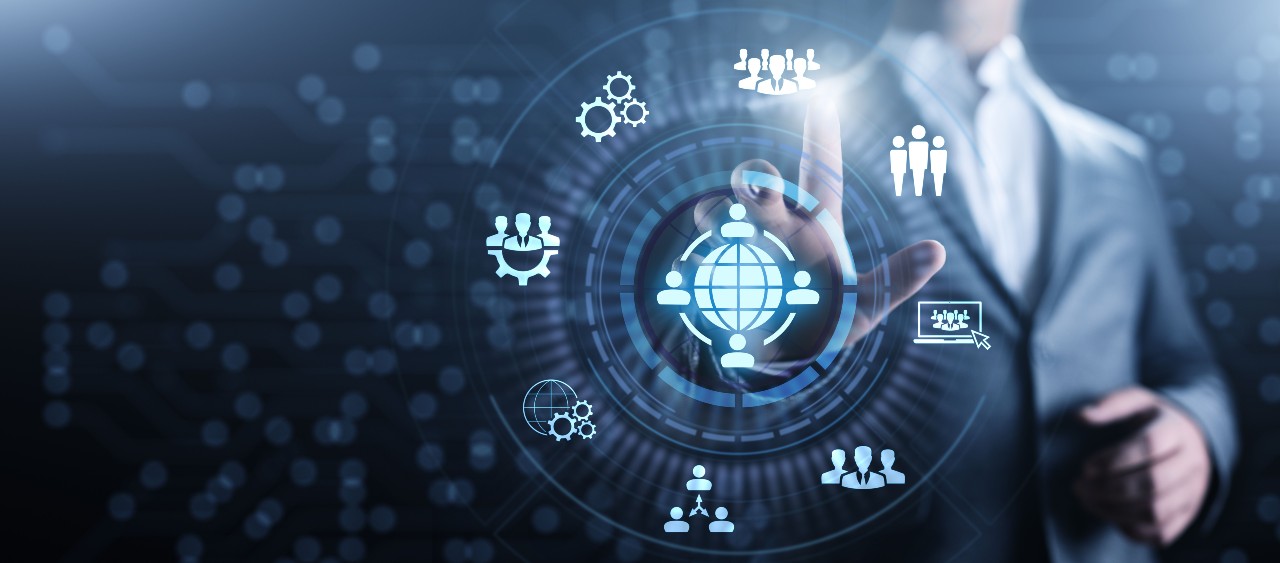Enterprises today are going through big-time disruptions as Industry 4.0, and a digital-first economy takes hold. But even before they cope with the new realities, another big disruption hits them – that of the changing nature of the workforce and work.
Skill shortages, especially in emerging technologies, have plagued workplaces for over a decade. Such a talent crunch has worsened of late. Skill development is not keeping pace with tech advances, and the gap is widening.
Leading enterprises go all out to hire talent. They increase H.R. budgets and draw up proactive head-hunting strategies. They also deploy formal training and skill development programmes to upgrade employee skill-sets.
But hiring talent alone is not enough. The unpredictability of a changing workforce causes turbulence in enterprises. Only resilient enterprises that adapt to new realities can become competitive.
Here are four big forces causing turbulence and how to deal with it.
1. The omnipresence of technology
Technology improves workforce productivity. But it also disrupts time-honed work models.
Automation has been taking over repetitive and mundane tasks. For instance, many enterprises have deployed chatbots that process basic customer support queries. Bots assist recruiters by checking if technicians applying for jobs have up-to-date certifications. Such automation frees human employees to focus on more complex tasks and issues.
New technologies such as Artificial Intelligence (A.I.), IoT and robotics enable the automation of more complex tasks. Neural networks, a branch of A.I., mimic human thinking capabilities. Advances in such fields will lead to machines taking over even more tasks from humans.
Automation renders many jobs obsolete. For instance, 77% of the jobs today are vulnerable to automation in China. But tech advances may not lead to extensive job losses from a macro perspective. It rather impacts the nature and profile of jobs. Lower-end clerical tasks, such as those of bank tellers, would become automated. Most of the new job opportunities would be for higher-level complex tasks and managing the machines. Also, automation would unlock new, innovative business opportunities, creating new types of jobs. A 2022 study in Indonesia estimates automation to displace up to 23 million jobs and create between 27 and 46 million new jobs.
The application of technology is making things difficult for employees, though. More than 80% of all companies rate their business as complex for employees. Employees tend to cope by working longer, stressful hours. About 40% of the U.S. population believes it is impossible to succeed at work and have a balanced family life. About 49% of U.S. workers work 50 or more per week, and 20% put in 60+ hours per week.
Worse, employees are not able to keep pace with advances in tech. The half-life of a skill has come down to six years from 30 years, even for fresh university graduates. The traditional learning model at school and applying such skills in the workplace is no longer sustainable. Employees need constant reskilling and lifelong learning to remain effective at work.
Enterprises need to:
- Empower employees with reskilling efforts. Continue investing in skill upgrades to bridge the skill gaps. Use innovative ways to disseminate information. Use social media and video platforms that appeal to the younger workforce.
- Strengthen H.R. policies and practices, and encourage employees to have an active work-life balance.
- Use technology to simplify and standardise wherever possible. For instance, enable simple interfaces as a bridge between humans and technology. Examples include mobility apps with neat UX that offer easy access to the technology or information employees need.
- Consider employees as internal customers. Consider the employee also when designing systems focusing on the customer, and strive for a balance.
2. The impact of big data
Another significant tech-related force that is disrupting the workforce is big data. Increasing digitization has enabled capturing data from almost all facets of work. It is now easy to capture data on how fast the employee works, the work steps they take, how they engage with customers, and so on. As a case in point, managers track field technicians using GPS to intervene if key metrics deviate from benchmarks.
Big data connects people and information and enables data-based decisions. It also makes it easy to quantify things that were impossible to do so before. H.R. managers may, for instance, use performance data for appraisals and employee training needs. The issues related to using subjective assessments for such purposes become passe.
But Big Data also distracts. For instance, the average worker spends 25% of their day reading or answering emails. Information overload and finding relevant information drain the employees’ energy.
The success of analytics-based decision-making depends on:
- Data literacy among managers and H.R. People managers need an understanding of numbers and the ability to read dashboards. For instance, correlation does not always imply cause and effect. H.R. managers who take decisions based on only a correlation might create a disaster.
- Setting up systems that enable the workforce to use data in their jobs. Consider a field service app that offers service history and customer information. Such insights improve field technician productivity manifold.
- Applying analytics for actionable information. Set up robust data management systems, including data lakes, APIs and other tools. Capture relevant data, cleanse it, and run well-trained algorithms.
3. Dominance of remote work
The office is fast losing its relevance. Work-from-home had been gaining in popularity for a while before the pandemic struck. The COVID-19 mandates promoted work-from-home in a big way, and there is no going back to the traditional office. Most companies now have a hybrid work model, where employees commute to the office only on a need basis. Even for manufacturing, newer models such as 3D printing-based distributed manufacturing disrupt centralised work models.
Companies need to:
- Redesign work so people can progress regardless of their incumbent role.
- Set up flexible and resilient collaboration systems. Seamless communication channels become essential to do work in a contingent work environment.
4. Increase in contingent work
Work has become more contractual. Businesses increasingly use freelancers and independent contractors and have transient relationships with them. In 2020, 40% of U.S. workers took up contingent jobs on a temporary or fixed-term contract basis. Such employees may have working relationships with more than one company.
The rise of the contingent workforce has disrupted traditional enterprise structures. Hierarchical business functions give way to project-based work. Most teams are temporary and matrix in nature. Many contingent employees are on a project basis and leave after the contract ends. Assignments and tasks replace formalised job descriptions.
The focus on full-time, permanent workers no longer works. Resilient enterprises integrate contingent workers into the mainstream. They
- Develop policies for temporary workers, remote workers, and independent contractors.
- Restructure compensation packages so that contingent workers receive comparable rights and benefits. Skilled contingent workers choose the enterprises that offer the best terms and packages.
5. The generational shift of the workforce
Most of the boomers have exited the workforce. Even Gen X are on their way out. Millennials and the new Gen Z have different work, and life approaches.
Not too long ago, a career meant a well-defined path working in companies, with limited job mobility. Today, the average tenure in a job is 4.5 years and dropping. Employees today leave jobs on a whim, even if they do not have any other opportunities. As the “Great Resignation” that follows the COVID-19 pandemic shows, employees quit on a whim, even without any reason. They now have options to survive on benefits or take up contingent jobs. The new workforce is no longer interested in stable employment. They are not motivated by paychecks alone, either. Instead, they seek fulfilling jobs that increase their self-worth and take risks to accomplish what they want. They seek a sense of accomplishment and happiness over other values.
The generational shift in the workforce also changes management and leadership styles. Successful leaders:
- Ditch the classical authoritarian leadership styles in favour of servant leadership styles. Leaders facilitate talented employees to make them stay. They provide all resources to them to enable a conducive work environment.
- Understand such motivational and attitudinal changes in the millennial and Gen Z workforce. They respect employees and consider them partners in the enterprise’s growth story.
Businesses seeking to thrive in Industry 4.0 must adopt a proactive approach to face these disruptive forces head-on. The onus is on business leaders to herald transformative change that redesigns and re-image work. Leveraging human resources as a strategic advantage depends on setting up agile systems and moving fast.













